Syllabus Edition
First teaching 2018
Last exams 2026
Graphs & Diagrams (Cambridge (CIE) IGCSE Geography): Revision Note
Exam code: 0460 & 0976
Graphs & Diagrams
Types of data
Continuous data is numerical data that can take any value within a given range, e.g. heights and weights
Discrete data is numerical data that can only take certain values, e.g. shoe size
Quantitative data is where the results can be expressed using numerical values
Qualitative data is where the results can’t be expressed as numbers, e.g. opinions
Line graph
One of the simplest ways to display continuous data
Both axes are numerical and continuous
Used to show changes over time and space
Strengths | Limitations |
|---|---|
|
|
Example
A river cross-section is a particular form of line graph because it is not continuous data, but the plots can be joined to show the shape of the river channel
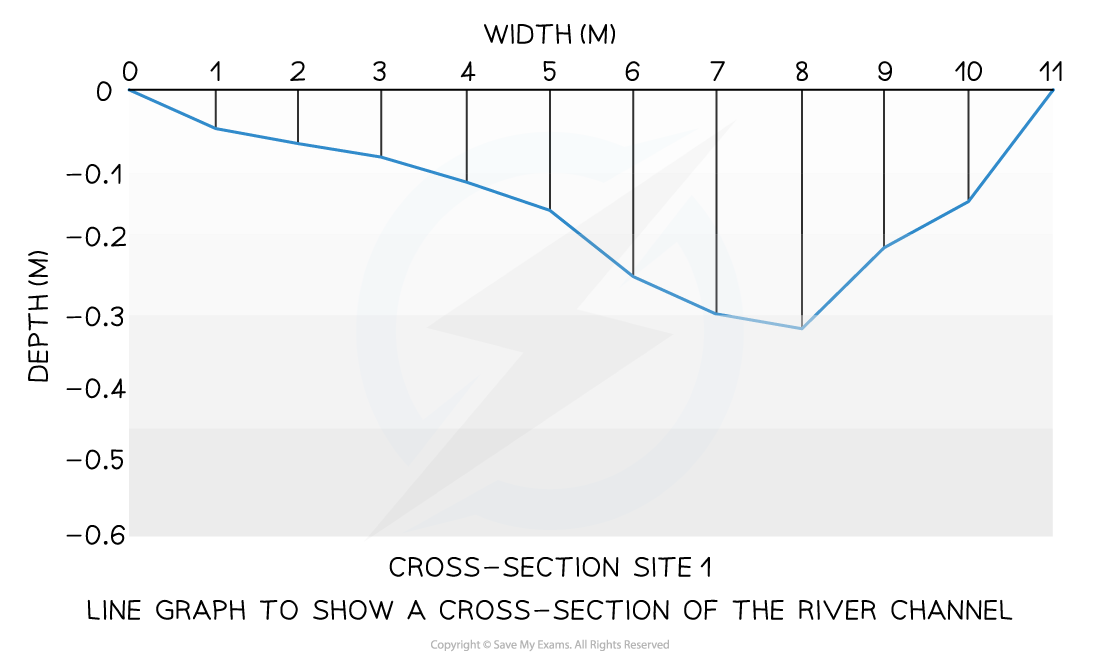
Bar chart
A bar chart is the simplest form of displaying data
Each bar is the same width but can have varying lengths
Each bar is drawn an equal distance apart (equidistant)
The data is discrete data
Bar graphs are useful for:
Comparing classes or groups of data
Changes over time
Strengths | Limitations |
|---|---|
|
|
Example

Histograms
Histograms show continuous data
Always use a ruler to draw the bars
All bars should be the same width
The top of the bar should reach the number on the side of the graph that is being represented
There should be no gaps; all bars should be touching
Ensure all axes are labelled and that the graph has a title
Strengths | Limitations |
|---|---|
|
|
Example
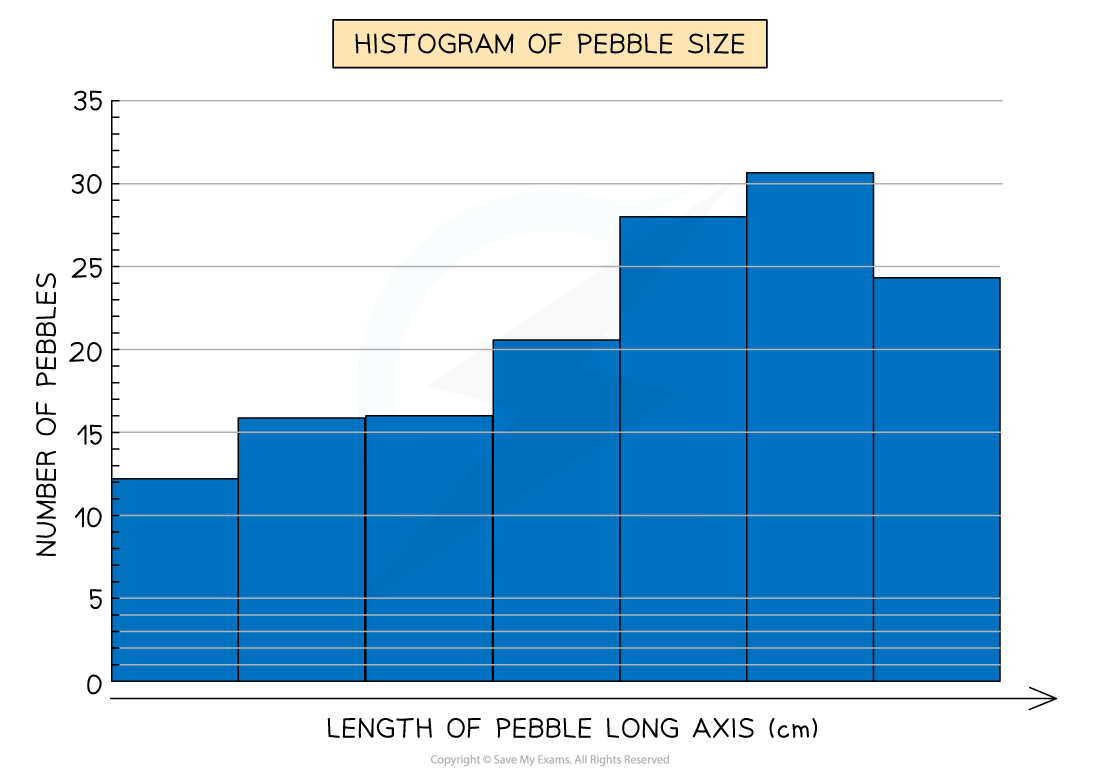
Compound or divided bar chart
The bars are subdivided to show the information, with all bars totalling 100%
Divided bar charts show a variety of categories
They can show percentages and frequencies
Strengths | Limitations |
|---|---|
|
|
Example
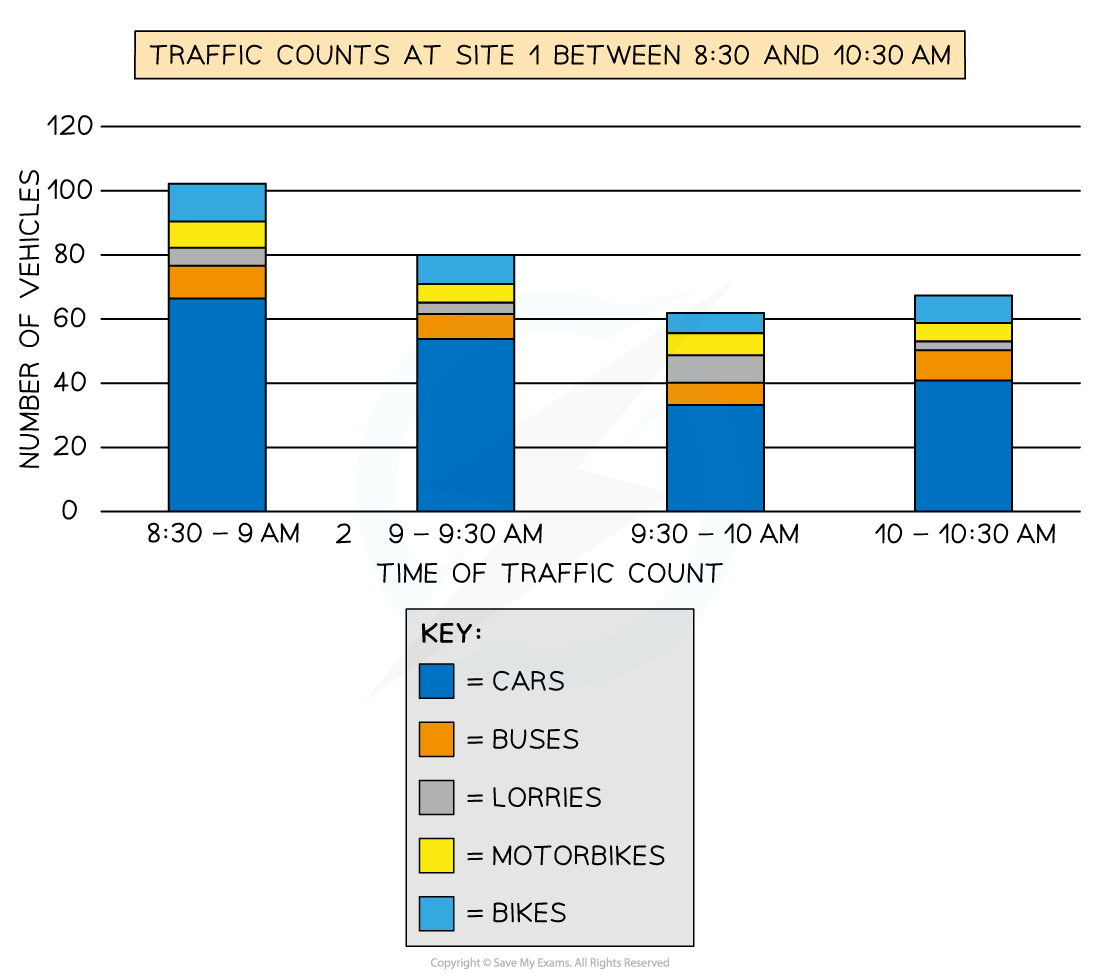
Population pyramid
This is a type of histogram
Used to show the age-sex of a population
It can be used to show the structure of an area/country
Patterns are easy to identify
Strengths | Limitations |
|---|---|
|
|
Example
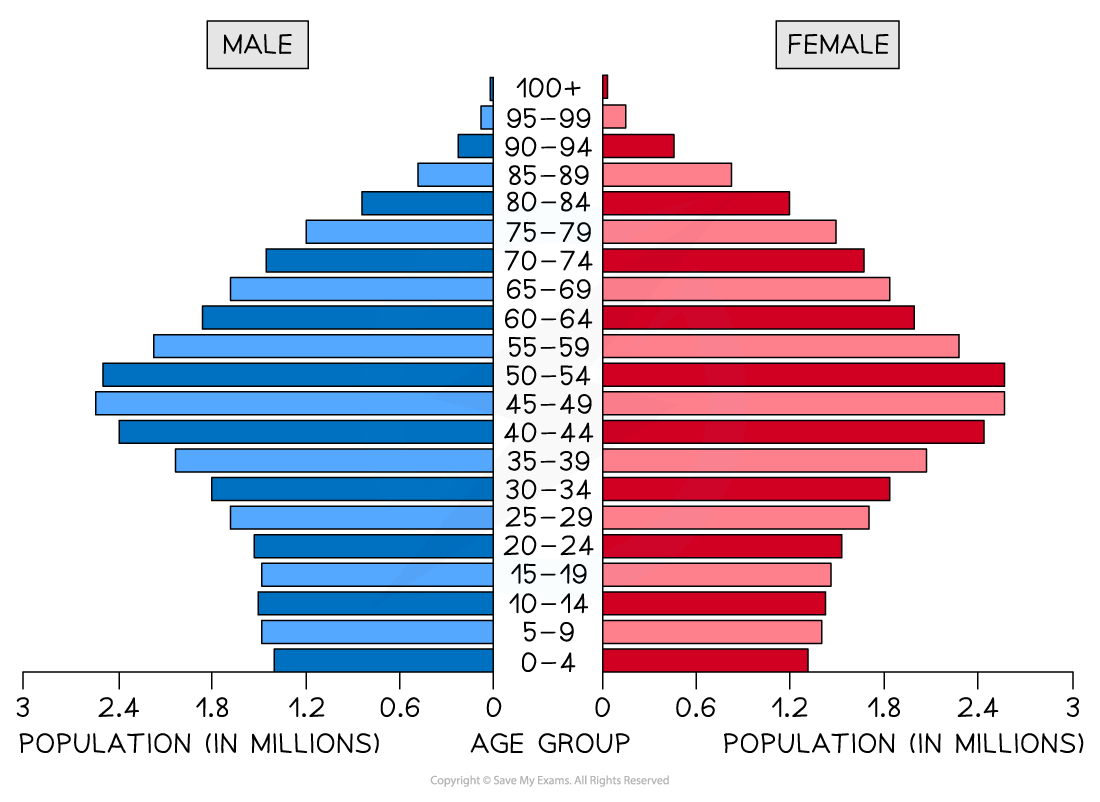
Pie chart
Used to show proportions, the area of the circle segment represents the proportion
A pie chart can also be drawn as a proportional circle
Pie charts can be located on maps to show variations at different sample sites
The percentage of the pie chart must add up to 100%
To calculate degrees of the pie chart (which totals 360°), divide the percentage by 100 and then multiply by 360
Each segment should be a different colour
Strengths | Limitations |
|---|---|
|
|
Example

Examiner Tips and Tricks
To work out the percentage increase/decrease, work out the difference between the two numbers, divide the difference by the first number, then multiply this number by 100.
For example, the difference between 37 and 43 is 6. Then 6 / 37 x 100 = 16.21.
The percentage increase is therefore 16.21%.
Rose diagram
Uses multidirectional axes to plot data with bars
Compass points are used for the axis's direction
Can be used for data such as wind direction, noise or light levels
Example
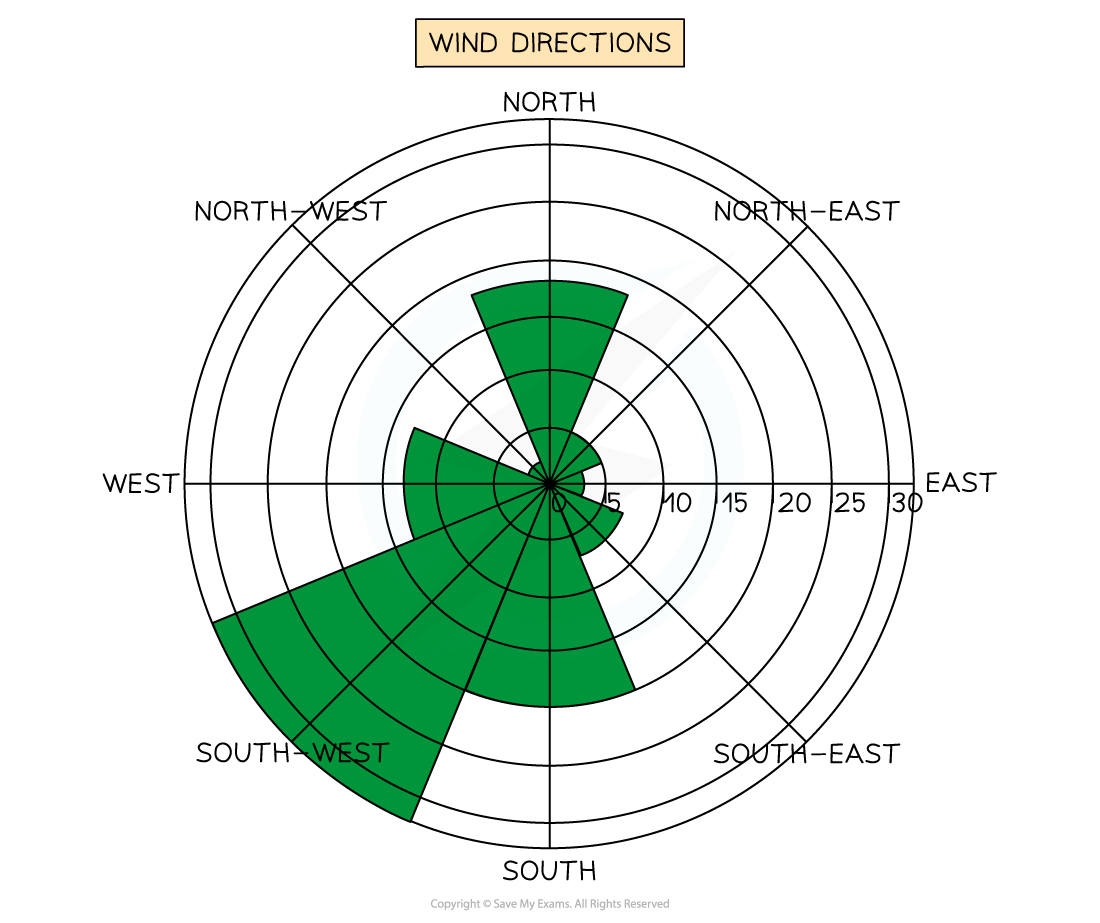
Triangular graph
Triangular graphs are used to display data, which can be divided into three
Strengths | Limitations |
|---|---|
|
|
Example
Read each side carefully so you are aware which direction the data should be considered
Always read from 0 to 100 and follow through to the next 0
Can be either clockwise or counter-clockwise
In the example below, the data reads clockwise
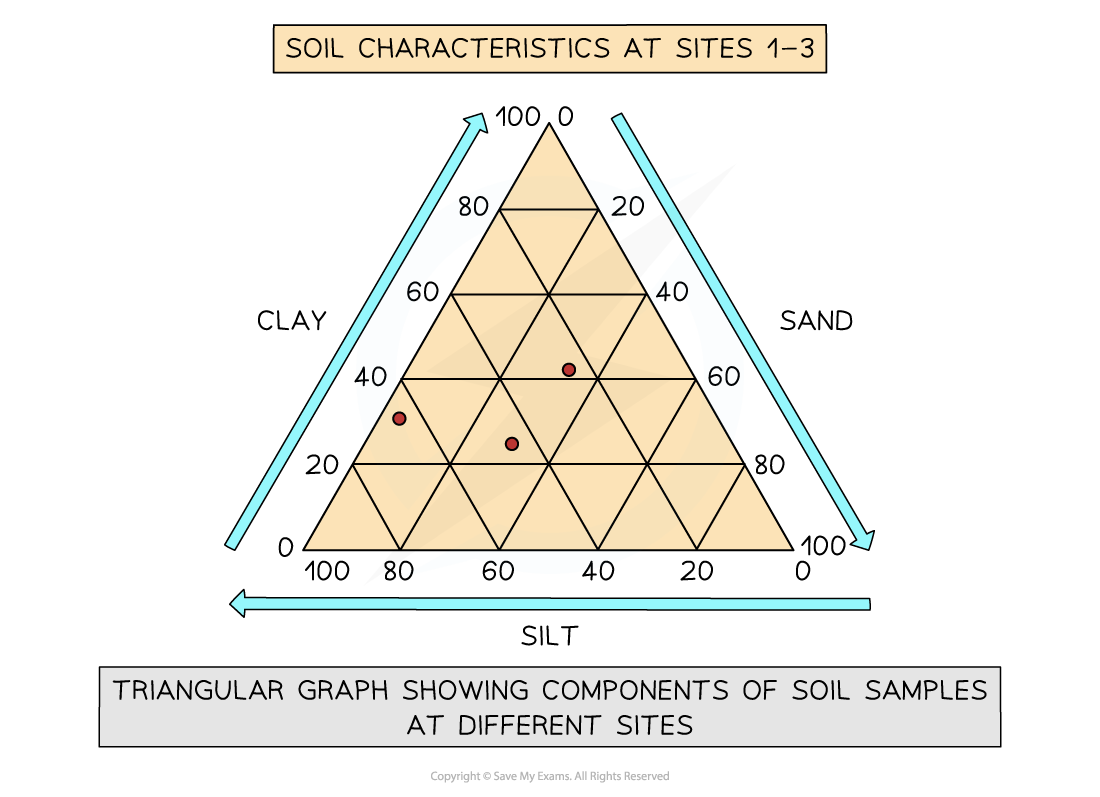
Scatter graph
Points should not be connected
The best fit line can be added to show the relations
Used to show the relationship between two variables
In a river study, they are used to show the relationship between different river characteristics, such as the relationship between the width and depth of the river channel
Strengths | Limitations |
|---|---|
|
|
Example
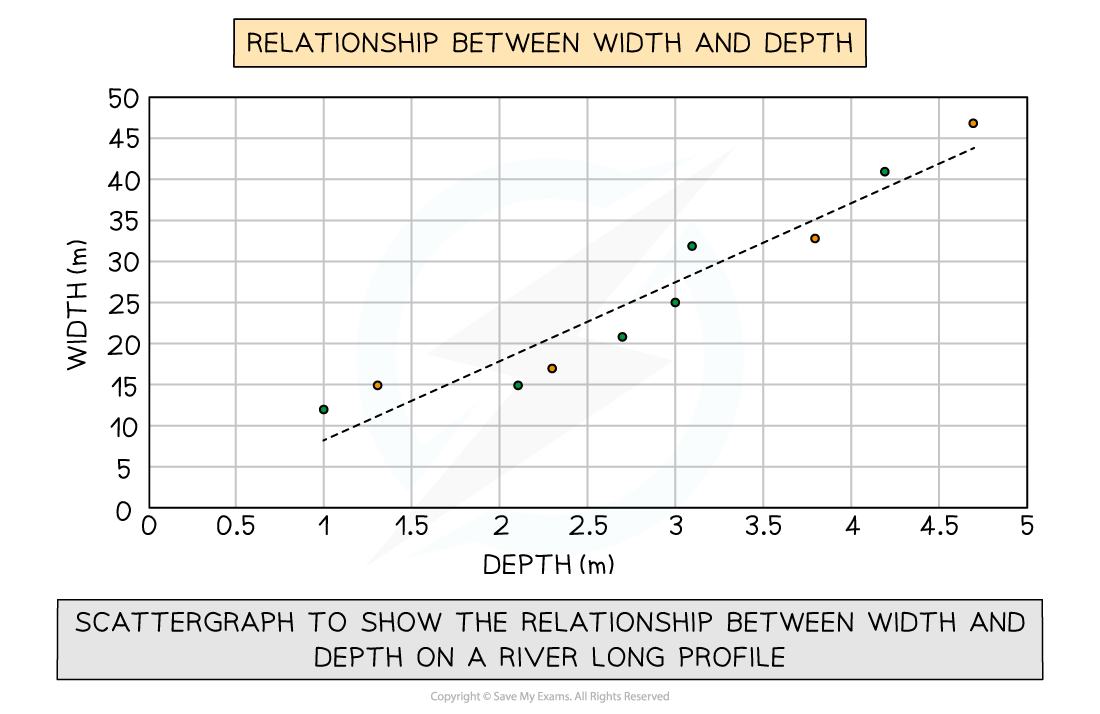
Types of correlation
Positive correlation
As one variable increases, so too does the other
The line of best fit goes from bottom left to top right of the graph
Negative correlation
As one variable increases, the other decreases
The line of best fit goes from the top left to the bottom right of the graph
No correlation
Data points will have a scattered distribution
There is no relationship between the variables

Worked Example
Making predictions from a set of data
You may be asked to make a prediction for the next step in given data (either table or graph form) in your exam
Study the data carefully
Look at the direction in which the data is going
Are the numbers increasing or decreasing?
Is there a clear pattern forming?
E.g. does the data point value change by 3, 4, 6, etc. each time
Study the scatter graph below, which shows the cost against distance travelled
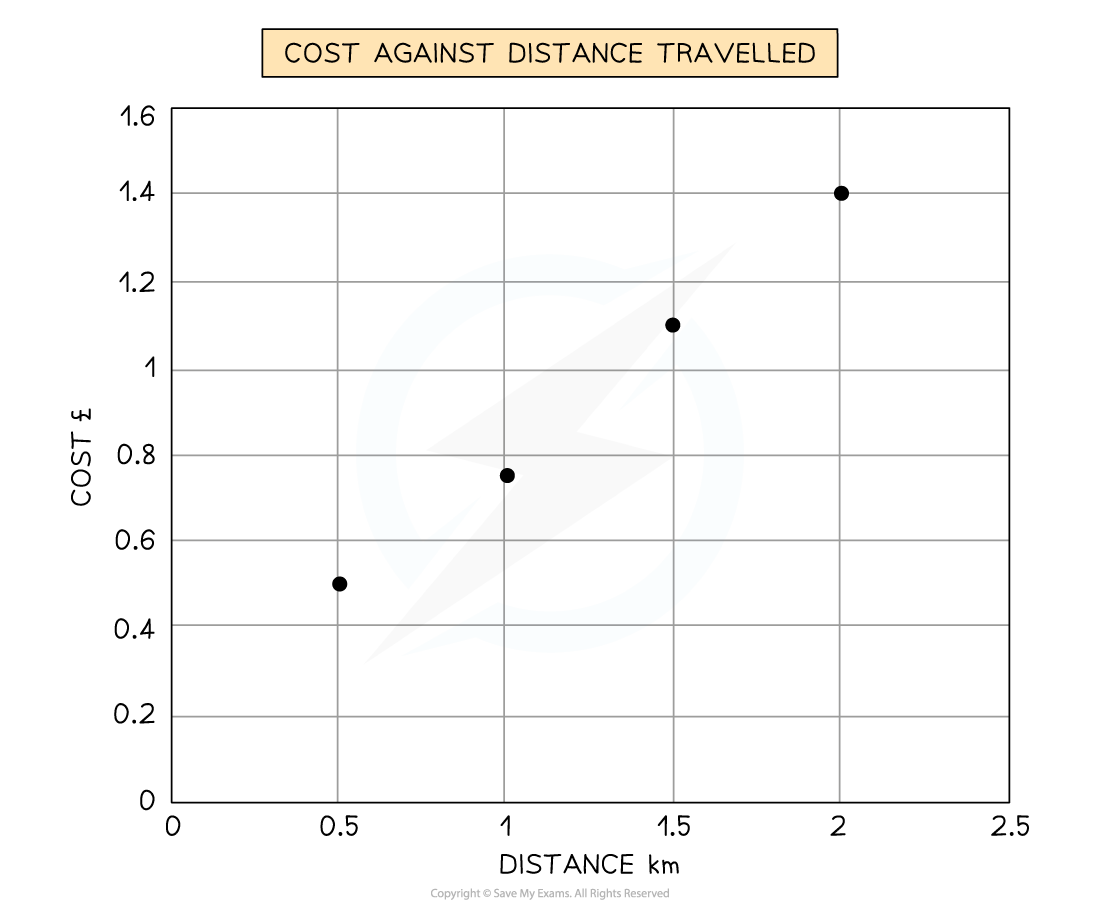
Predict what the cost at would be at 1.75 km
Answer:
To predict the cost at 1.75 km, look at the cost at 1.5 km and 2.0 km
Then follow the line of best fit to predict the value at 1.75 km
Cost would be £1.3
Examiner Tips and Tricks
In the exam, you will not be asked to draw an entire graph. However, it is common to be asked to complete an unfinished graph using the data provided. You may also be asked to identify anomalous results or to draw the best-fit line (aka trend line) on a scatter graph.
Take your time to ensure that you have marked the data on the graph accurately
Use the same style as the data which has already been put on the graph
Bars on a bar graph should be the same width
If the dots on a graph are connected by a line, you should do the same
Choropleth map
These are maps that are shaded according to a pre-arranged key
Each shade of colour represents a range of values
It is common for one colour in different shades to be used
Can be used for a range of data, such as annual precipitation, population density, income levels, etc.
Strengths | Limitations |
|---|---|
|
|
Example
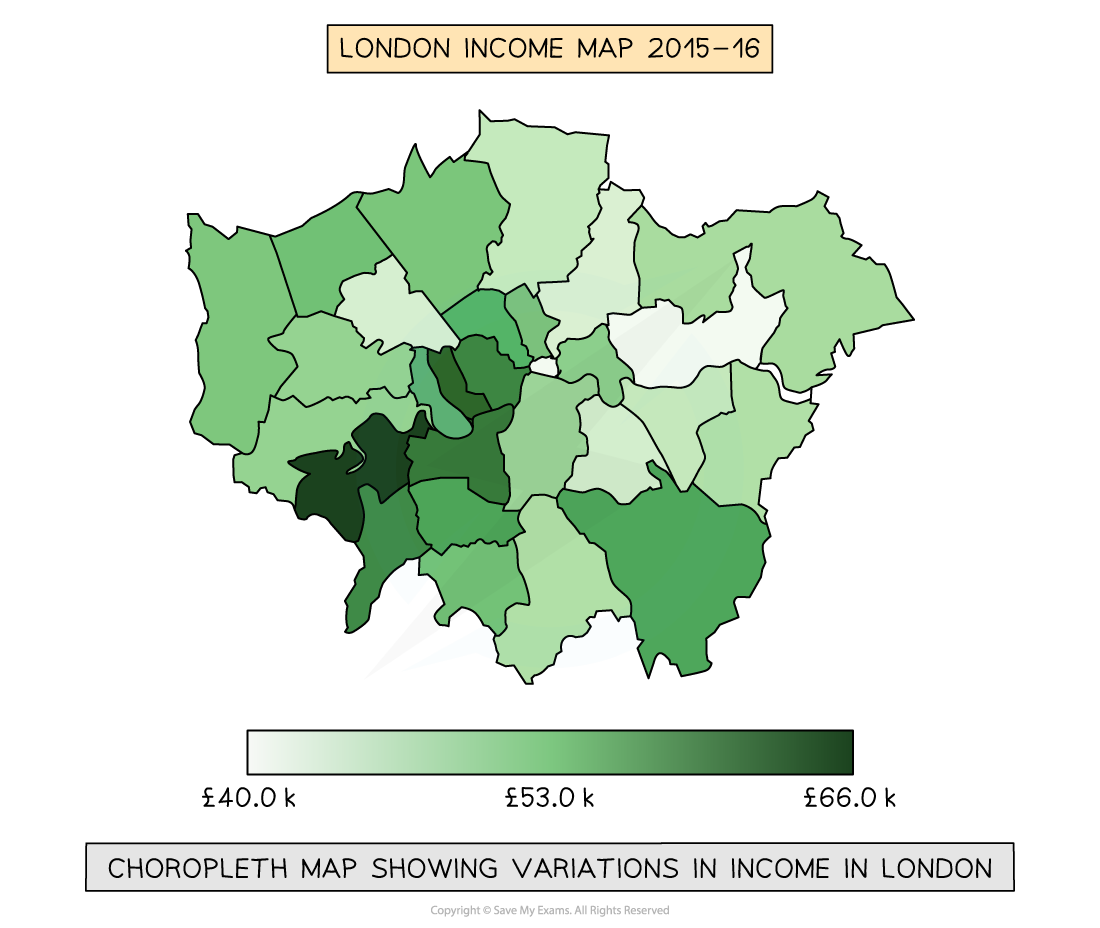
Proportional symbols map
The symbols on the map are drawn in proportion to the variable represented
Usually, a circle or square is used but it could be an image
Can be used to show a range of data, for example, population, wind farms and electricity they generate, traffic or pedestrian flows
Strengths | Limitations |
|---|---|
|
|
Example
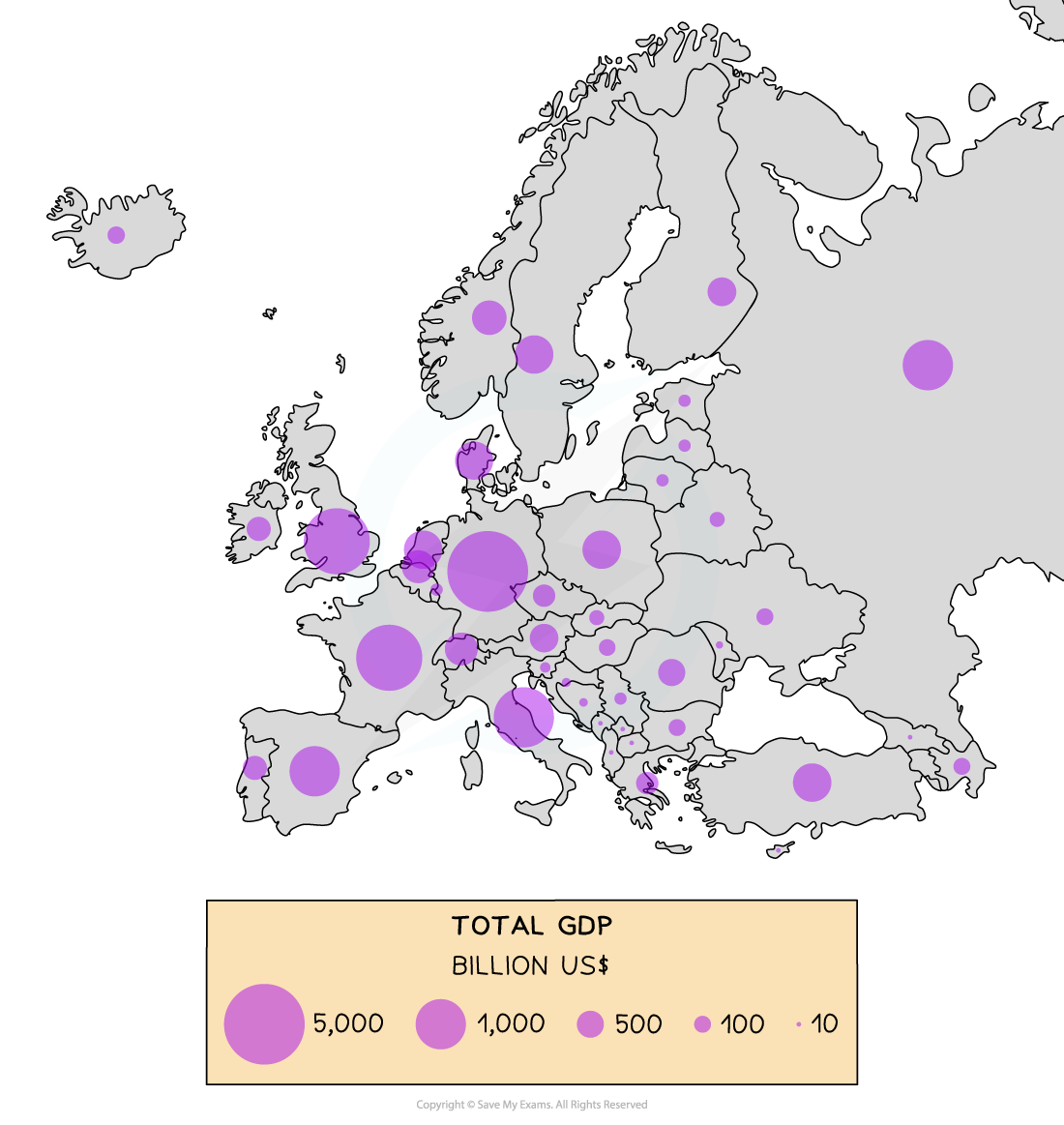
Pictograms
These are a way of displaying data using symbols or diagrams drawn to scale
Useful way of showing data if accuracy is not too important and data is discrete
Years do not need to be continuous
Symbols do not need to be whole but can represent a proportion
A key is needed to show if the total number of objects or events that image represents exceeds one
How to read a pictogram
Step 1: Read the problem carefully and identify the specific information requested from the pictogram
Step 2: Count the symbols corresponding to the desired information and report the count
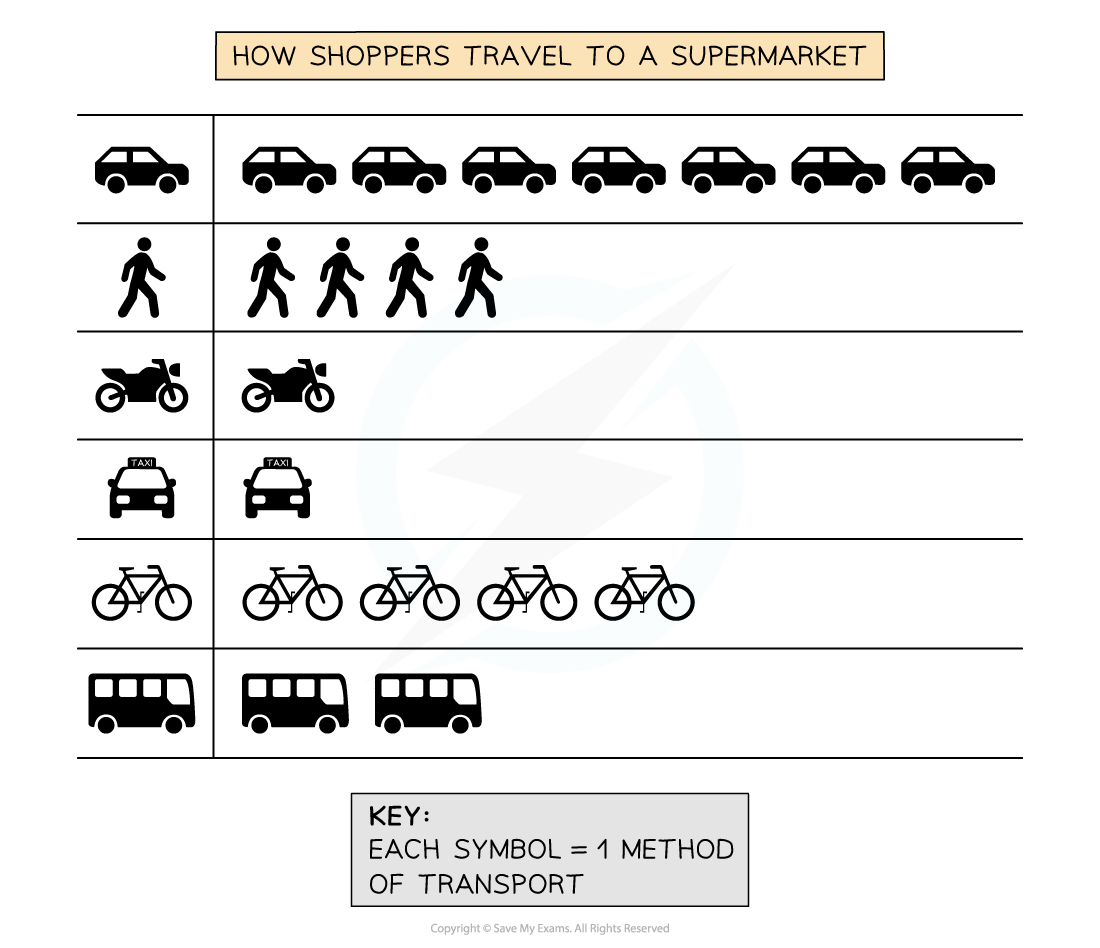
In the pictogram above, you can see that 4 shoppers walked to the supermarket, but only one used a taxi
The majority of shoppers used a car to travel to the supermarket

Unlock more, it's free!
Did this page help you?